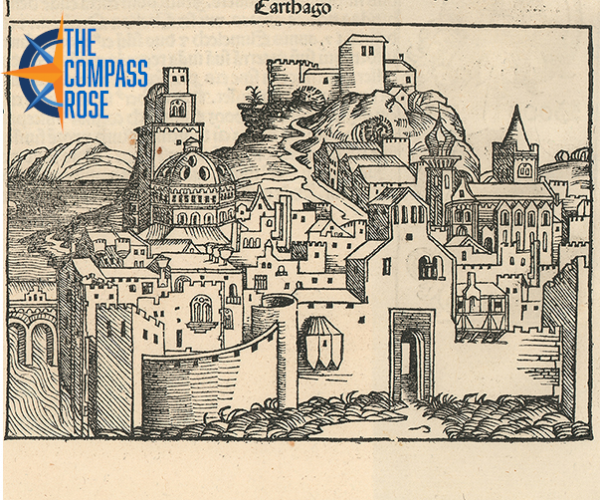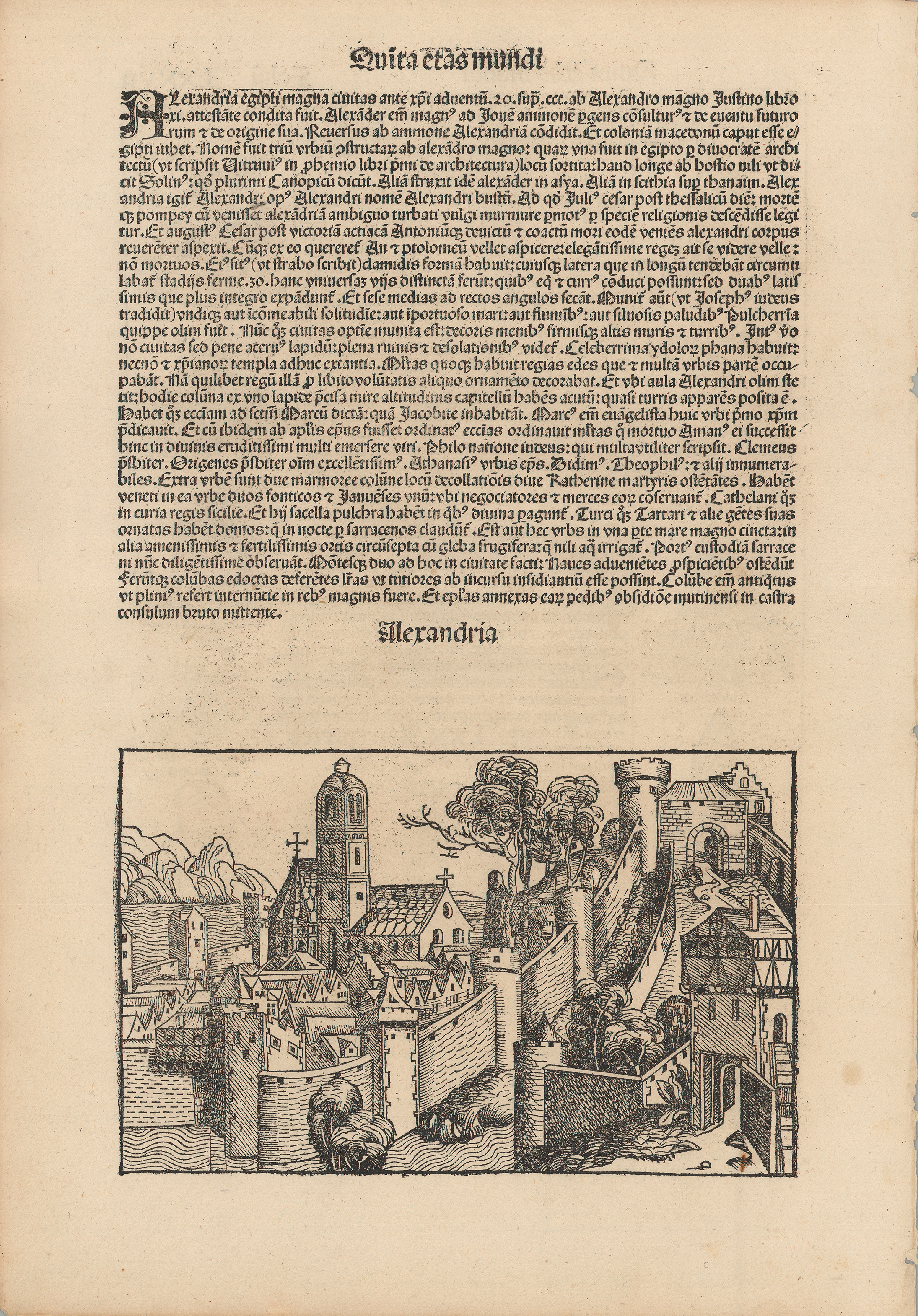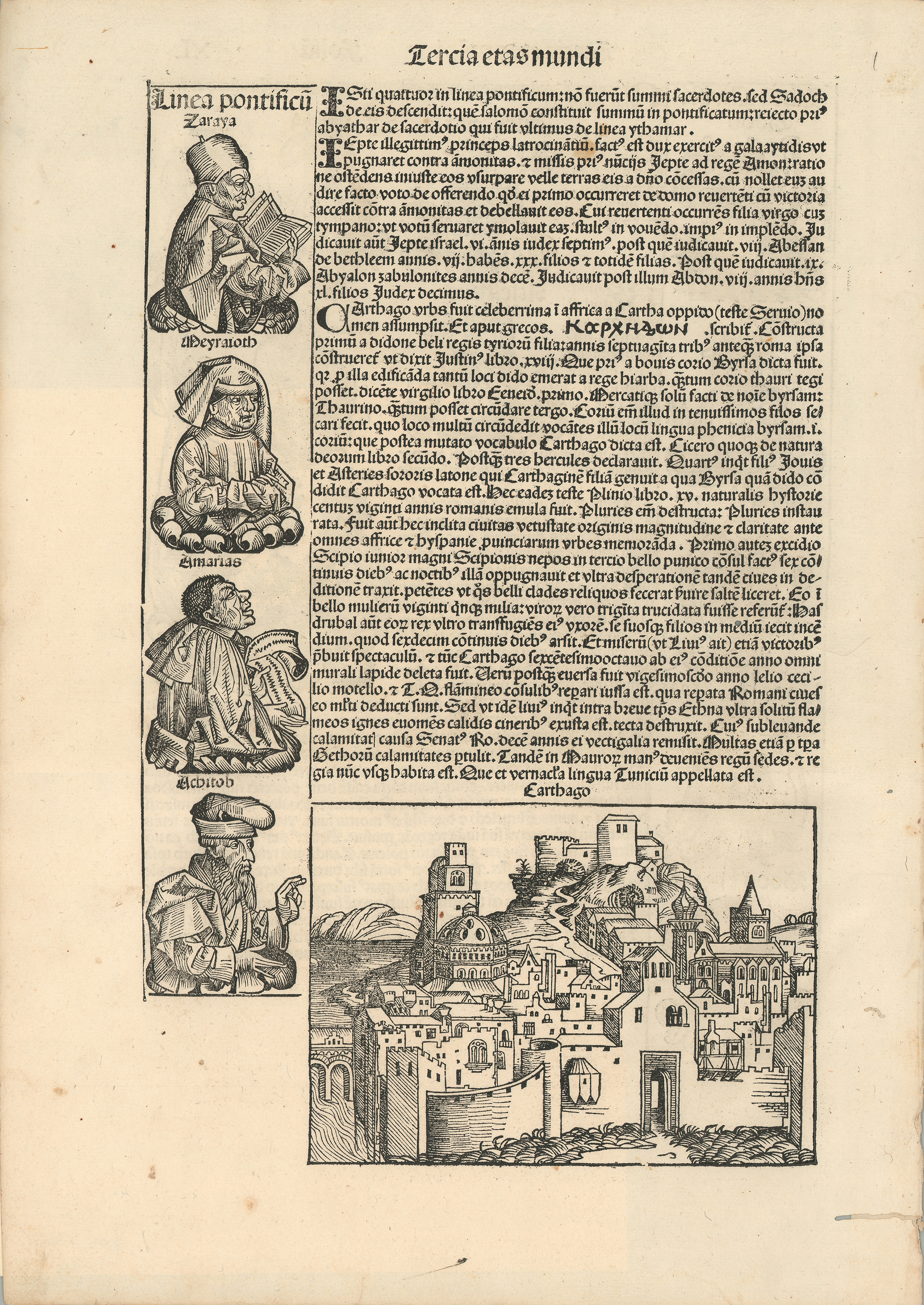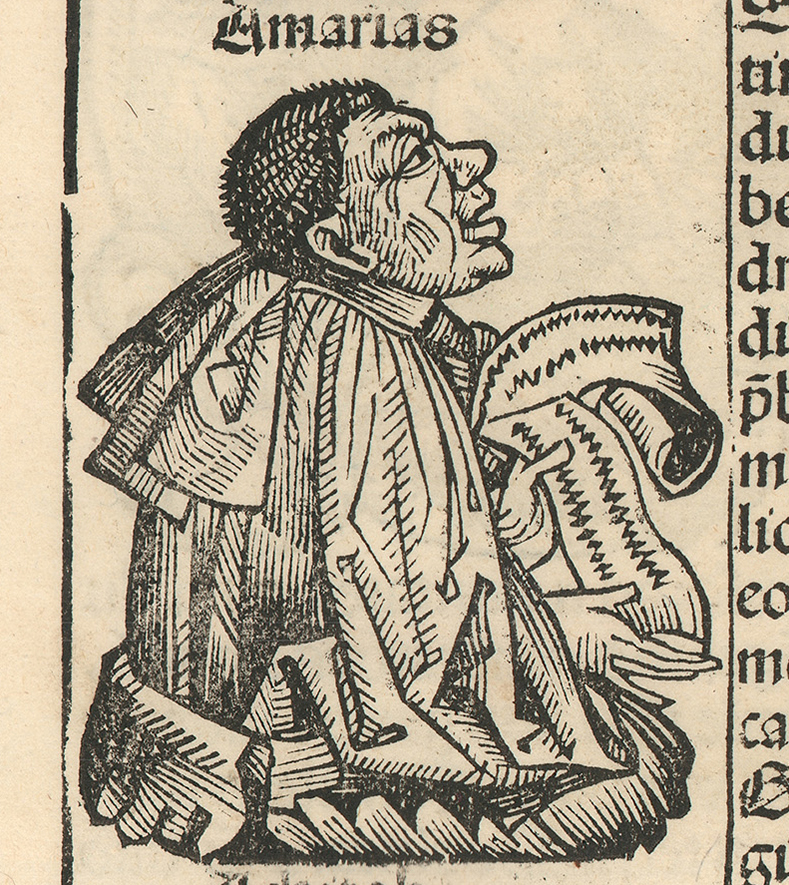
by Ben Huseman


by Ben Huseman
The purpose of The Compass Rose is to raise awareness of Special Collections' resources and to foster the use of these resources. The blog series also reports significant new programs, initiatives, and acquisitions of Special Collections.
The University of Texas at Arlington Libraries Special Collections is renowned for its map collection, but many may not realize that, as part of this, it is also a great place to study the depiction of cities and towns over time (and not just with original examples of Texas cities and towns which some of you might expect). Recent acquisitions have immensely enriched our collections, allowing students, professors, and the public access to original primary sources of amazing variety, quality, and significance. This is the first of a series of blog posts to explore some urban highlights from our collections. The examples cited are by no means comprehensive. When normal times return, we hope you will come back to Special Collections and explore our collections in person. We will be here to help you find unexpected treasures.
Since its purchase back in 1977, library staff members have proudly proclaimed that the oldest item in UTA’s map collection dates from 1493: the famous Mappa Mundi or world map from the so-called Nuremberg Chronicle.1 Now, thanks to a series of generous donations by foreign language educator and map collector Dr. Jack Franke (Distinguished UTA Alumnus, class of 1987) from Monterey, California, that map has company: six pages from the same book with woodcut2 illustrations purporting to show the three northern African cities of Alexandria, Damiata (Damietta), and Carthage in addition to woodcut illustrations for people mentioned in genealogical lineages in the Bible.
The publication of the Nuremberg Chronicle in 1493 marked a number of milestones in the history of printing and in the history of books. Compiled and written by Dr. Hartmann Schedel (1440-1514), a German physician and humanist scholar from the city of Nuremberg, the Chronicle was a compilation of world history in 600 pages from “the Creation” to 1493. The text itself, published that year in both Latin as Liber Chronicarum and in a German translation as Weltchronik, was not that extraordinary, being a somewhat typical, almost medieval, ecclesiastical Christian work of the time “…in a thin humanist guise.”3 With Johannes Gutenberg’s introduction of movable type and the printing press in the 1450s, there was a revolution in the spread of knowledge, not unlike the digital revolution of more recent times. What made the Nuremberg Chronicle so special were its illustrations, its graphic design, printing, and its woodcuts and depictions of cities. The Chronicle had more than 1,800 pictures, and -- although many of these 652 woodcuts were repeated throughout --, that number was more than any previous printed work.4 One did not have to carefully read the text or even be literate in order to appreciate the illustrations or come away with an impression of the things depicted. The chief illustrators were Nuremberg artist Michael Wohlgemut (1434-1519) and his stepson Wilhelm Pleydenwurff (1460-1494). However, scholars also generally agree that the famous German Renaissance artist Albrecht Dürer (1471-1528) was undoubtedly involved in its creation since he was a young apprentice to Wohlgemut at the time.5
Of the dozens of city views, 32 were the first authentic representations of their subjects. The rest were imaginary views, including at least two of UTA’s three woodcuts representing African cities. According to Adrian Wilson in his book The Making of the Nuremberg Chronicle (1976), a total of “53 woodcuts of cities and countries were used to represent 101 different places.”6 While more recent works would employ a photograph or at least a print based upon an eyewitness sketch to illustrate a subject, this was obviously impossible in the case of photography and highly unlikely in the case of such a sketch at that time. Travel in the late 15th century was in many ways more difficult than travel during the coronavirus pandemic; consequently, artists could not easily visit distant lands to sketch or generally depend upon the mail to deliver them a sketch from one who had. Moreover, frequent wars between Christians and Muslims greatly impeded European travel to or communication with North Africa. Further, since producing a woodcut was such a difficult process, in order to save time and costs, authors, printers, and publishers, like Schedel and his printer Anton Koberger (1440/1445-1513), re-used woodcuts such as these imaginary city views within the same book. They thus applied this method to the portrayals of individuals for whom no portraits existed. There were 96 woodblocks cut for these “portraits” in the Chronicle, but they were used 598 times within the book for different people, with an average use of six times each!7
The three African city view woodcuts now at UTA exhibit these characteristics. UTA’s view of the Egyptian city of Alexandria, (figs. 1 and 5) for example, was printed from the same woodcut used in at least one copy of the German translation of the Chronicle for the illustrations of the mythical city of Amazonia, the Greek city of Athens, the northern Italian city of Papia (Pavia), the Egyptian city of Damiata (Damietta), a city in Austria, and a city in Prussia!8 Not surprisingly, the imaginary view is not filled with exotic architecture, but instead with half-timbered stucco buildings, stone churches, castles, ramparts, and town walls looking much like Nuremberg itself. UTA’s Alexandria, like the other three UTA woodcuts (including the world map) all came from the Latin edition. To produce such a page (actually part of a leaf or sheet of four pages, two each, front and back, for a folio size book like the Chronicle), the type was set first in the forme and then the woodcut block was added to the folio imposition and locked in place in the chase or iron frame to be placed upon the press. This allowed both text and illustrations to be included on the same page.9 Schedel’s text for Alexandria, mentions its founding by Alexander the Great, its role as Egypt’s capital city under the Ptolemaic kings, the Romans, and the Byzantines, its role as an early center of Christianity, and its status under the Turks, but he makes no mention of the great ancient library there.

Fig.5 - Workshop of Michael Wohlgemut, Alexandria, woodcut engraving with letter press on paper, 43.8 x 30.5 cm., from Hartmann Schedel, Liber Chronicarum (Nuremberg: Anton Koberger, 1493). UTA Libraries Special Collections, Gift of Dr. Jack Franke
UTA’s view of the Egyptian port city of Damiata (Dumyat or Damietta) (figs. 2 and 6) was printed from the same woodcut used in at least one copy of the German translation of the Chronicle for the illustration of the Israeli city of Tyberias (Tiberias), the Italian city of Mayland (Milan), the Swiss city of Jenff (Geneva), and a city in Poland.10 Again, the fortified city walls, towers, and church spire all look a lot like Nuremberg. Schedel noted Damiata's important location as a port on the Nile delta and some of its history when Christian forces occupied it during the Crusades.

Fig.6 - Workshop of Michael Wohlgemut, Damiata, woodcut with letter press on paper, from Hartmann Schedel, Liber Chronicarum (Nuremberg: Anton Koberger, 1493). UTA Libraries Special Collections, Gift of Dr. Jack Franke
UTA’s page with a woodcut representing the North African city of Carthago (Carthage, in present-day Tunisia) (figs. 3 and 7) is accompanied by text and four woodcut half-length portraits representing a genealogy of the descendants of Moses’ elder brother, prophet, and high priest Aaron taken from the Hebrew book of Chronicles. In addition to city walls with a prominent gate, the woodcut includes what could be construed as a domed mosque and an onion-roofed minaret in addition to other towers, buildings, and a hilltop castle.11

Fig. 7 - Workshop of Michael Wohlgemut, Carthago, woodcut with letter press on paper, from Hartmann Schedel, Liber Chronicarum (Nuremberg; Anton Koberger, 1493). UT Arlington Libraries Special Collections, Gift of Dr. Jack Franke
Interestingly, the image of Amarias (fig.8) has distinctly African features, suggesting that the German woodcutter had personally and carefully observed an African sitter or copied a sketch by another artist who had. The woodcut may be among the earliest authentic printed representations of an African in western art – undoubtedly it is the oldest one at UTA! It is also significant to note that at least one example of the German translation of the Chronicle has different portrait woodcuts for the top three portraits on UTA’s sheet. While the portrait woodcuts were, like some of the imaginary city views, interchangeable with other portrait subjects, the Carthage view was only used once in the Chronicle.

Fig.8 - Woodcut detail of Amarias from page with woodcut view of Carthage from Hartmann Schedel, Liber Chronicarum (Nuremberg: Anton Koberger, 1493). UTA Libraries Special Collections, Gift of Dr. Jack Franke
In 1976 scholar Peter Zahn wrote that “The Nuremberg Chronicle remains one of the great works in graphic art of the fifteenth century and its making deserves the interest not only of art historians, typographers and printers, but of all those who love books.”12 Today we might add that the number of people around the world affected by older graphic imagery in digital form has grown considerably and an understanding of how these images originated aids immeasurably in digital literacy.
1 UTA’s 1493 world map from the Nuremberg Chronicle is a collection favorite. Its simplistic pre-Columbian view of the world divided into only three continents surrounded by figures representing the three sons of Noah from whom all people on earth descend never fails to impress visitors. The “monstrous races” along the edges of the map and on the back side remind us of the unfortunate all-too human tendency to see others not like us or people with disabilities as weird “freaks.” While the illustrators of the Nuremberg Chronicle had different technological challenges than we do today and while they saw the world in a different way than we see it now, we all share their common humanity, and we delude ourselves if we think that some of their achievements, strengths, ideas, ignorant misconceptions, and failures are not unlike our own.
2 The woodcut process was one of the earliest and simplest forms of printing. It involved cutting away areas on a printing block. The areas cut away would appear white or uncolored on the finished print while the uncut areas on the surface of the block would be inked and create the design. Having physical examples in Special Collections allows us all an opportunity to see such things first hand.
3 Peter Zahn, “Introduction,” in Adrian Wilson and Joyce Lancaster Wilson, The Making of the Nuremberg Chronicle (Amsterdam: Nico Israel, 1976), p. 28.
4 Review of Chronicle of the World 1493: The Complete and Annotated Nuremberg Chronicle by Hartmann Schedel: Die Produktion der Schedelschen Weltchronik in Nürnberg: The Production of Schedel's Nuremberg Chronicle by Christoph Reske Review by: Eckhard Bernstein, in Renaissance Quarterly 55:4 (Winter, 2002) 1422-1424.
5 Zahn in Wilson (1976), p. 28.
6 Wilson (1976), pp. 55, 125
7 Wilson (1976), p. 55.
8 The Nuremberg Chronicle: A Facsimile of Hartmann Schedel’s Buch der Chroniken printed by Anton Koberger in 1493 (New York: Landmark Press, 1979). This facsimile does not specify the location of the original used to create it, but it is obviously taken from a copy of the 1493 German translation.
9 See Sarah Werner, Studying Early Printed Books 1450-1800: A Practical Guide (Hoboken, New Jersey: Wiley Blackwell, 2019), especially pp. 15-23.
10 Compare with Nuremberg Chronicle: Facsimile (1979)
11 On the verso of UTA’s Carthage sheet are woodcut representations of descendants of Boaz (Boos), from the book of Ruth, considered important by Schedel as they were in the lineage of King David (according to Hebrew scripture) and Jesus of Nazareth (according to the Christian New Testament).
12 Zahn in Wilson (1976), p. 28
Add new comment